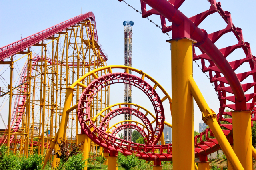- Albanian
- Arabic
- Belarusian
- Bengali
- Czech
- English
- French
- German
- Hebrew
- Hungarian
- Indonesian
- irish
- Italian
- Japanese
- kazakh
- Persian
- Russian
- Thai
- Uzbek
- Vietnamese
Innovative Wheel Powered by Human Effort for Enjoyable Rides and Scenic Views
The Human-Powered Ferris Wheel A Sustainable Adventure
In a world increasingly focused on sustainability and alternative energy sources, the concept of a human-powered Ferris wheel offers an innovative glimpse into the future of amusement rides. This delightful invention marries the joy of traditional carnival attractions with the principles of eco-friendliness and community engagement. Let’s explore the history, design, and broader implications of the human-powered Ferris wheel.
A Brief History
The Ferris wheel is an iconic feature of amusement parks worldwide, first introduced at the 1893 World's Columbian Exposition in Chicago. Designed by George Washington Gale Ferris Jr., the original Ferris wheel stood at an impressive 264 feet and was powered by steam. Over the years, Ferris wheels have evolved in design and function, but the principle of mechanical power—primarily powered by electricity—has remained the same. With the rise of renewable energy and greener technologies, a shift towards human power as a viable energy source for amusement rides has become a fascinating trend.
Design and Function
The human-powered Ferris wheel operates on the simple yet ingenious principle of human energy conversion. Riders, instead of relying solely on electric motors, contribute to the wheel's movement through pedaling or similar means. Typically, this design includes pedal stations or platforms situated in each gondola. As passengers pedal, they generate kinetic energy, which is then converted to rotational energy to turn the wheel. This clever concept not only fosters physical activity but also promotes a sense of teamwork and community, as riders often need to coordinate their efforts with others.
The underlying physics is simple yet effective. Each pedal-driven gondola is connected to a system of gears that effectively amplifies the force produced by the riders’ pedaling. Additionally, the human-powered Ferris wheel can be designed to incorporate regenerative braking systems, allowing for energy to be stored and reused, further enhancing its efficiency.
Environmental Impact
human powered ferris wheel

The environmental benefits of a human-powered Ferris wheel cannot be overstated. Conventional amusement rides often rely heavily on electricity, which may come from non-renewable sources. In contrast, human-powered rides leverage renewable human energy, minimizing carbon footprints and promoting a greener approach to recreation. By reducing reliance on electricity, these rides are also less affected by energy crises, making them a more stable choice for entertainment providers.
Moreover, constructing a human-powered Ferris wheel allows for the incorporation of sustainable materials and practices. From environmentally friendly construction materials to using biodegradable lubricants, the entire process can be designed with sustainability in mind. This not only influences the environmental impact but also generates public interest and awareness about ecological responsibility, especially among younger audiences.
Community Engagement and Recreation
Beyond the mechanical and environmental aspects, a human-powered Ferris wheel creates unique opportunities for community engagement. In settings such as local fairs, festivals, or educational institutions, these rides can serve as a delightful centerpiece, drawing people together in a shared experience. Riders engage in physical activity while enjoying the thrill of the ride, fostering a sense of camaraderie.
Educational programs can also be developed around the concept of human-powered rides. Schools can incorporate the principles of physics and energy conservation into their curricula, creating interactive learning experiences for students. Imagine students not only learning about energy consumption but also actively participating in a Ferris wheel's operation, deepening their understanding of renewable energy in a fun and practical way.
Conclusion
In summary, the human-powered Ferris wheel represents an exciting and innovative approach to amusement rides, combining joy, sustainability, and community engagement. It challenges traditional notions of entertainment while promoting physical activity and environmental consciousness. As society continues to navigate the complexities of energy consumption and its impacts, the human-powered Ferris wheel stands as a beacon of ingenuity. It not only captivates audiences with its nostalgia and fun but also serves as a powerful reminder of our potential to create a greener, more interconnected future, one pedal at a time.
-
Flume Ride-Hebei Zhipao Amusement Equipment Manufacturing Co., Ltd.|Thrilling Water Attraction&Customizable DesignJul.30,2025
-
Flume Ride - Hebei Zhipao Amusement Equipment | Water Coaster, Thrilling DescentJul.30,2025
-
Flume Ride - Hebei Zhipao | Thrilling Water AttractionJul.30,2025
-
Flume Ride: Thrilling Water Attraction by Hebei Zhipao|Log Flume Manufacturers&Flume Ride DesignJul.30,2025
-
Flume Ride-Hebei Zhipao Amusement Equipment Manufacturing Co., Ltd.|Thrilling Water Coaster, Safe DesignJul.30,2025
-
Flume Ride-Hebei Zhipao Amusement Equipment Manufacturing Co., Ltd.|Thrilling Water Attraction, Safe DesignJul.30,2025
